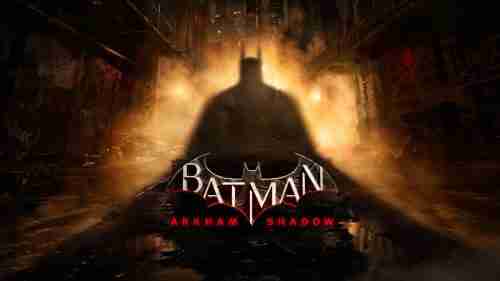Most of us were surprised when Batman: Arkham Shadow was announced. The Arkham series has traditionally been a console franchise. Developed by Rocksteady and WB Games Montréal, the previous titles were handled by studios without VR experience. But lo and behold, Meta leveraged its influence, aiming to do for the Meta Quest what Valve did for the Valve Index with Half-Life: Alyx: take a beloved franchise, create a new installment, and make it a VR exclusive.
This approach raises a crucial question: did Half-Life: Alyx boost Valve Index sales? Surprisingly, yes—it did. Following the announcement, Valve’s Index sales saw a significant jump, with 103,000 units sold in just over a month. A strong franchise can drive hardware adoption. So, is Batman: Arkham Shadow good? And can it sell Quest headsets?
Hopefully, this review will answer the first question. As for the second question? We’ll leave that up to you. Tell us what you think in the comments.
Thug-Life
Taking place early on in Batman’s career, Arkham Shadow is a sequel to a prequel. It takes place after Batman: Arkham Origins and fleshes out some of the early history of Bruce Wayne, featuring various characters known to fans of the lore, including Harvey Dent, Jim Gordon, Dr. Harleen Quinzel, Dr. Leslie Thompkins, and several others.
As the game begins, you assume the character of ‘Matches Malone,’ a small-time Gotham City gangster that first appeared in Batman #242 during a character-defining run that was written by Dennis O’Neil, illustrated by the incredible Neal Adams, and penciled by Dick Giordano. To many long-time Batman readers, myself included, this was truly an iconic era. You don’t need to have known any of this to enjoy the game or appreciate the progression of the narrative, but it does demonstrate the intimacy that the writing team led by Narrative Director Brendan Murphy and Lead Writer Alex O. Smith have with the original source material.

Anyway, I digress. As Batman / Matches Malone, you set fire to the Bat signal above the Gotham police station, promptly get arrested, and then sent to Blackgate Prison, where much of the game takes place.
As anybody familiar with movie tropes, you know already how this will play out; you’ll get a flashback showing why you decided to take on the Matches identity and why you wanted to end up inside Blackgate.
Wham! Thud! Thwack!
If you’re a rare bird who’s never played any of the previous Batman Arkham games, let’s just say the games were mostly fantastic, relying on excellent writing, superb voice acting, and drawing on the strengths of Batman’s character to alternate between stealthy sequences where you took enemies out one by one while remaining undetected and all-out fights where you fought various opponents together using a combat system famous for its free-flowing nature that allowed you to string together varied attacks and build up incredibly satisfying combos. It was wildly innovative back then and has, arguably, never been bested in third-person gaming since. The games also showed off Batman’s origins as a detective, with a detective mode that lets you scan clues and figure out your next lead.
The biggest question regarding Arkham Shadow‘s gameplay was always going to be how faithfully it manages to translate that gaming experience to VR, and this is where you have to acknowledge the sheer acumen that developers Camoflaj (who did a great job with Iron Man VR) have demonstrated with Shadow’s design choices.

The first choice made here was to limit the scope of the game world in a way that makes sense. You can create a whole Gotham City on later generation consoles, but it would have been impossible to do so on a Meta Quest standalone headset without massive concessions in graphics, so instead, the game relies mainly on the limited world of Blackgate prison, and outside of that only features a few selected locations around Gotham City, and it weaves a story that works well within those confines, preventing you from feeling that the spatial limitations are contrived.
The other choice made here was to alter the free-flowing nature of the combat, leading to a mixture of free decisions regarding who you’ll strike next and when, and short prompted almost-QTE sequences that occur during combat sequences. So you’ll pick your enemy, punch-dash towards them, then be prompted to deliver a jab, uppercut, or hook, and sometimes a beat down with both hands or a punch after you’ve grabbed an opponent’s leg, etc.
Initially, I was disappointed that the combat didn’t replicate the free-flowing nature of the console games, which was excellent for ‘flow-state’ combat. However, after a few hours, I adjusted, stopped comparing it to the originals, and appreciated that—despite sacrificing some of the original feel—it provided an intense workout. It’s easy to take on small fights with only 3 or 4 enemies, but when you go through a big battle with 10 enemies or more, you’ll work up a good sweat! I checked my Move stats, and on longer sessions of 90 minutes or so, I was burning up around 500 calories playing this game.
Predator sequences, on the other hand, have carried over perfectly to VR and feel just like they did in the flat games, except, well – much better. You’re Batman, perched over your enemies, picking them off one by one with stealth takedowns until the last one is down. When you get good at these sequences, it feels, for lack of a better word, perfect.
The game replaces the Riddler Trophies of the previous games with Rat King statues that are often in difficult-to-reach areas, requiring some puzzle-solving to reach; these are all optional and provide some head-scratching relief from the action of the combat sequences.

As you progress through the game, your arsenal also evolves, with skill or progression trees for your combat skills, suit, gadgets, and predator skills. The game already starts with many of those already unlocked, but as you gain experience points, you can unlock more, like letting you use sonic Batarangs, various combat combos, quicker and stealthier takedowns, and more. Some of these are only available once you’ve received new gadgets, like the Bat Claw, the Shock Gloves, and others, all delivered by Alfred via the Bat Wing. This helps you feel more and more powerful as the game progresses, and by the end, you really do feel like a perfectly capable Dark Knight, ready to take on whatever Gotham’s criminals and twisted villains throw your way.
The game also offers what had become a staple in the console versions: combat and predator challenges. Although there are only three of each for now, we expect more of those to come from Camoflaj.
Batman: Arkham Shadow does what it should; it successfully brings the gameplay of the Arkham series to VR and does it with confidence and flair.
My Beautiful Batworld
Arkham Shadow nails the visual language of Batman, blending Gothic and Neo-Gothic architecture with a mood of urban decay. Its dark, gritty criminal underbelly and subtle steampunk elements make it one of the best-looking games on Meta Quest. It could be argued that other games like Red Matter 2 look better, but games like Red Matter 2 don’t have to balance their looks with bone-crushing action sequences featuring a dozen characters on screen at a time.
The game does a marvelous job with all the characters, including the NPC, most of whom are visually distinct. You won’t see the same characters copied and pasted ad infinitum here, and the main characters are incredibly detailed and remarkably well-animated.
Aside from the beauty of the locations and art direction, the actors’ motion and expressive facial captures are superb, highlighting their beautiful performances and lending emotional heft to the already excellent writing.

The game also features real-time shadows, conveniently placing a backlight behind you regularly to highlight your shadow with your cowl and bat ears, subtly and silently reminding you that behind that headset you’re wearing, you ARE Batman.
The only complaint is that the game’s framerate occasionally drops, especially before and after gate-opening sequences, which are likely there to mask load times. It’s a little distracting when it happens, but it never occurred to me during combat sequences where it would have been the most jarring. These hiccups happen even when the dynamic resolution setting is turned on in the game, but Camoflaj have told us that the game is still being optimized, and the first patch might even be out by the time you read this review.
I Hear You, Bats.
If anything, the audio in Shadow is even better than the graphics since, by its very nature, it’s unencumbered by performance limitations. The sound effects are solid throughout, and the soundtrack by Kazuma Jinnouchi blends the familiar dark, orchestral tones of previous Arkham games with fresh compositions that drive home the game’s drama. Jinnouchi maintains continuity with the series while introducing new elements that match the game’s unique mood.

The voice acting is also superb, with standout performances by Roger Craig Smith as Batman / Bruce Wayne, Troy Baker as Harvey Dent, and Mara Junot as Leslie Thompkins. Junot’s portrayal, in particular, conveys deep empathy for Bruce, truly drawing you into the narrative and the emotional connections between the characters and creating a world in which Batman is not a lone solitary figure but a man loved by the people who understand his traumas, his struggles, and the choices he makes.
Bat-Snags
Despite being a smooth experience overall, I encountered a few issues playing Arkham Shadow. Early on in the game, there was a rope tying a door shut, and I was supposed to cut it with a Batarang; this failed spectacularly despite my repeatedly trying; luckily, I found an alternate path, so it wasn’t a game-breaker. A few bugs like this showed up during my playthrough; a vent I couldn’t enter, a doorway that wouldn’t let me in even after it opened, etc. Infrequent as they were, such issues were usually resolved by simply reloading the last checkpoint or quitting the game and starting again.
The game also seems to trigger some communications with Alfred not by chronological sequence but by location, so I found that if a particular voice message from Alfred was triggered at some place, if you returned to that place again, the same recording was played; this was immersion breaking. I’m hoping Camoflaj will fix it.
I’ve also heard of some players who experienced a game crash where the game would just exit. This only happened to me once when my Quest mysteriously declared that it didn’t have enough memory to run ‘Manta.’
Bat Hours
If you’re wondering about length, the game’s campaign lasts about 10 hours, more or less, depending on how well you play it, how much of it you choose to complete, and what difficulty level you select. I played it on Hard. The combat and predator challenges could add significantly to that time if you enjoy those modes.
Bat Thoughts
Batman: Arkham Shadow is a remarkable achievement in standalone VR, featuring a compelling story, strong character development, stunning graphics, immersive combat, and captivating performances. It showcases how well the character translates across different media and highlights and builds upon the impressive world and mechanics created by Rocksteady way back in 2009. It also reflects the dedication, love, and respect that Camoflaj and Director Ryan Payton have shown for both the character and the earlier Arkham games and, in the process, proves that Batman’s world can thrive in VR, making Arkham Shadow a must-play for both VR fans and Batman enthusiasts alike.
What’re you waiting for? Do you really need a score?







